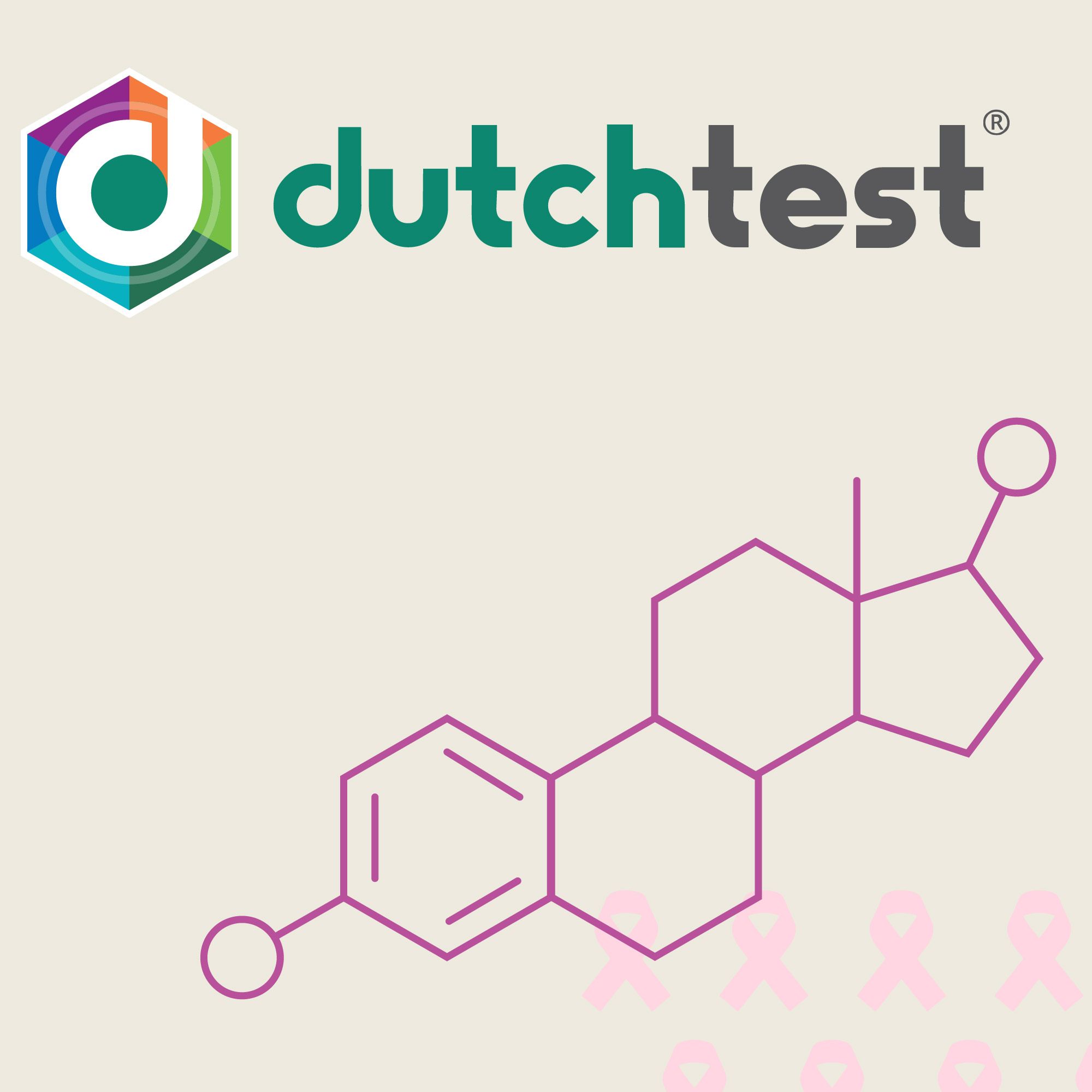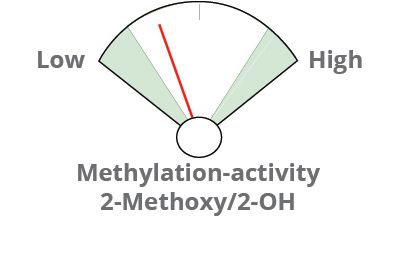Evaluating Estrogen Detoxification to Understand Breast Cancer Risk
Debbie Rice, ND
Evaluating Estrogen Detoxification to Understand Breast Cancer Risk
by Debbie Rice, ND, MPH

Breast c ancer may affect as many as 1 in 8 women. It’s important for patients and providers to understand the role that estrogen detoxification plays in breast cancer so that they can make more informed mitigation and treatment decisions.
Let's start with the basics.
What is Breast Cancer?
Cancer occurs when cells begin to grow uncontrollably. Cells normally follow a controlled process by which they are created and destroyed. The immune system manages this process and helps identify any abnormal changes that may occur within the cell. Breast cancer appears when the immune system is not able to regulate abnormalities in the breast cells.
Types of Breast Cancer
There are many different types of breast cancers. A breast cancer’s type is based on which cells in the breast excessively proliferate and become cancerous. Some breast cancers have hormone receptors, such as estrogen receptor positive (ER+) and progesterone receptor positive (PR+) breast cancers, and some express a protein called HER2 (i.e., HER2+ cancers). There are also breast cancers that do not have hormone receptors or HER2 proteins (e.g., triple negative breast cancers). Some factors that increase risk for breast cancer include family history, older age, and environmental factors.
Can Estrogen Detoxification I nfluence B reast C ancer R isk?
The way the body detoxifies estrogens may play a role in breast cancer. After t he body manufactures estrogens , such as e strone (E1), e stradiol (E2), and e striol (E3 ) , they must be processed and metabolized through the liver. The DUTCH Test measures metabolites from Phase I metabolism as well as Phase II methylation.
Phase I Estrogen Metabolism
The DUTCH Test measures five major Phase I estrogen metabolites: two 2-OH metabolites (2-OH-E1 and 2-OH-E2), two 4-OH metabolites (4-OH-E1 and 4-OH-E2) and 16-OH-E1. All of these phase I metabolites have oxidative potential; however, some are more damaging than others. It is preferred that most estrogen is metabolized into the 2-OH metabolites, as these are the most stable estrogen metabolites in Phase I that cause the least amount of harm to the body. For example, the 2-OH metabolites cause less DNA damage than the 4-OH metabolites, and their bond with the estrogen receptor is the weakest so they are removed from estrogen receptors most efficiently.
The 16-OH metabolite may have an increased capacity for proliferation as it is an estrogenic metabolite. It binds more tightly to estrogen receptors than the 2-OH metabolites and can cause tissue proliferation in breast tissue (e.g., fibrocystic breasts), endometrial tissue (e.g., heavy bleeding), ovarian tissue (e.g., ovarian cysts), but also in bone tissue, leading to improved bone mineral density.

The most dangerous estrogen metabolite is the 4-OH-E1 metabolite. Some research suggests that the 4-OH-E2 metabolite may not have the same carcinogenic effects of 4-OH-E1. The body must make some of these metabolites, so it is expected that 4-OH metabolites will be present in the body. However, the number of 4-OH metabolites should be minimized.
The 4-OH metabolites have the strongest bond to the estrogen receptor; therefore, the body must work extremely hard to break this bond. It takes a lot more energy to break off the 4-OH metabolites for detoxification than the other metabolites. The 4-OH-E1 metabolite has the potential to become a reactive quinone that causes DNA damage. Thus, if the body is not able to neutralize the 4-OH metabolites well or efficiently, they can wreak havoc on DNA.
When DNA is damaged, it disrupts cellular signaling and the body’s ability to repair itself and stop abnormal cell growth. There is correlation between increased 4-OH-E1 metabolites and breast cancer risk. Miao, et al state: “Among many alterations of sex hormone metabolisms, 4-hydroxy estrogen (4-OH-E) metabolite was found to be significantly increased in the urine samples of patients with breast cancer compared with the normal healthy controls. This was the most important risk factor for breast cancer”.
Phase II Metabolism: estrogen methylation
After estrogens are processed through Phase I, some of them are methylated in Phase II. The process of methylation takes dangerous, oxidative Phase I metabolites and neutralizes them into stable, water-soluble metabolites that are ready for excretion.
Even if a person is metabolizing most of their estrogen into the preferred 2-OH metabolites, if these 2-OH metabolites are not adequately methylated, they can still be oxidizing. Oxidation can lead to cellular stress, poor cellular health, and increased risk for abnormal cell function.

Methylation is dependent on catechol-o-methyltransferase (COMT) enzyme function. COMT relies on sufficient cofactors such as S-adenosyl-L-methionine (SAM), vitamin B6, and magnesium to function optimally. If COMT activity is slow, then the body may not be able to appropriately methylate estrogens through this final step of detoxification in the liver.
Phase III Metabolism: healthy stool evacuation
Phase III of estrogen metabolism is required for the continued detoxification of estrogens. Phase II metabolites in the liver migrate to Phase III detoxification in the intestines. Phase III ends in the stool. Without quality stools and digestive regularity estrogens stay trapped in the body. These estrogens recirculate, increasing the amount of estrogen to be detoxified.
When the body is overloaded with toxins, or unable to efficiently metabolize toxins, the burden of estrogen may start to create issues. Repeated exposure to the 4-OH metabolites (by poor Phase III clearance) increases the opportunity for DNA damage.
Evaluating Estrogen Detoxification with the DUTCH Test
Estrogen detoxification is an important component of metabolism. It is standard practice for the body to take compounds (hormones, foods, toxins), and process them—which usually means breaking them down into something “bad” in Phase I before turning them in to something “good” or neutral in Phase II.
These processes happen all the time, every day, in the body. It’s important to ensure the body has the capacity to clear toxins efficiently and without problems. DUTCH testing can evaluate the process of estrogen detoxification and may be a helpful tool in understanding how these processes are working.
References :
(Miao, S., et al, American Journal of Translational Research . 4-Hydroxy Estrogen metabolite, causing genomic instability by attenuating the function of spindle-assembly checkpoint, can serve as a biomarker for breast cancer. 2019; 11(8): 4992-5007.
PMID: 31497216
TAGS
Women's Health
Premenopausal Women
Postmenopausal Women
Estrogen Detoxification
Estrogen Dominance